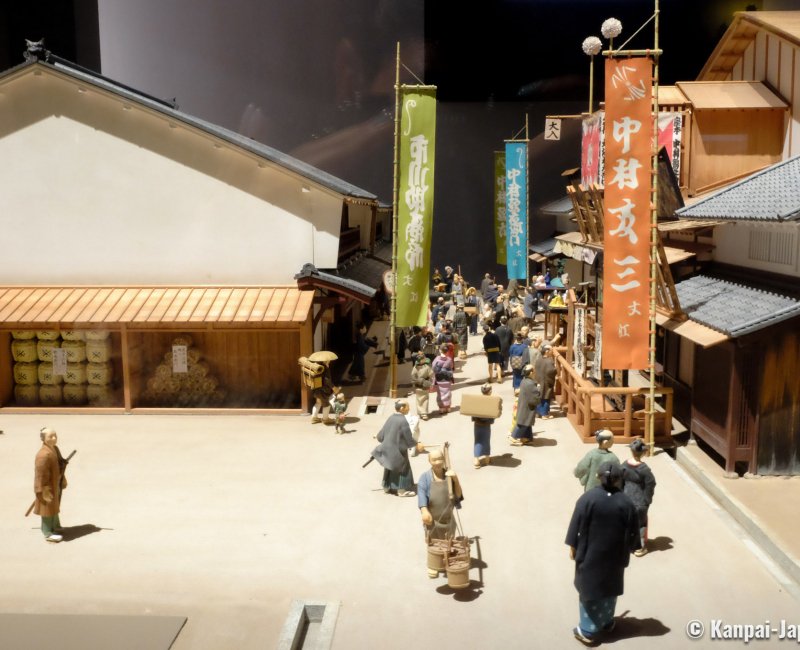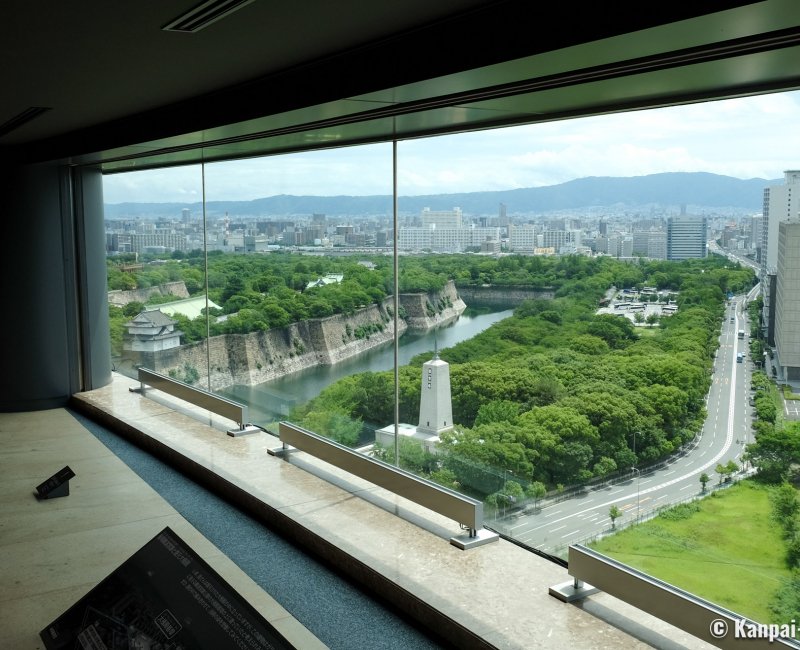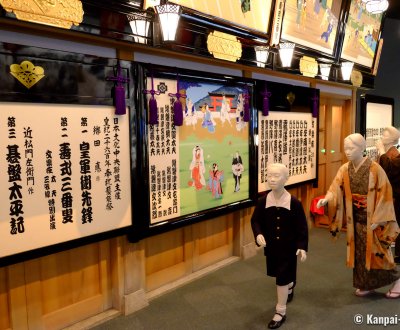Osaka Museum of History
Naniwa, the Former Capital
Osaka Museum of History is located near the Castle park, east of the downtown area. It retells 1,400 years of history and back to the times when the city was named Naniwa-kyo and was the capital of Japan. The gallery was inaugurated in 2001 in a modern building and offers a visual exhibition suitable for a younger audience.
Beneath the look of a modern and industrial megalopolis, the economic capital of Kansai hides a long history that the Osaka Museum of History tries to revive in its exhibition. With very a visual layout and sometimes funny, the visit is suitable to families traipsing near Osaka Castle 🏯 and looking for an indoor activity.
The museum is sheltered in a contemporary architecture building, partly spherical and with large glass surfaces. On the esplanade, a Kofun period (250 – 538 AD) kura warehouse crowned by a thatched roof indicates visitors they will travel back in time, up to the origins of Osaka when the city was called Naniwa and was the capital of Japan. The museum was indeed constructed on the former site of Naniwa Nagara-Toyosaki Palace, built 1,350 years ago. The former palace’s foundations are preserved underground and can be visited upon request.

Walk into the Japanese periods and sceneries
The permanent collection focuses on 3 great historical periods:
- At the 10th floor, the exhibition starts by the Antiquity, with a real-life reconstruction of Naniwa palace’s main building named Daigokuden;
- The 9th floor is dedicated to the daily life during the Edo period (1603 - 1868) and to the importance of the maritime routes for the economic development of the city, that was nicknamed Nihon no daitokoro "the heart of Japanese cuisine" at this time. It was also the birth of the first bunraku puppets.
- At the 7th floor, the display focuses on the Taisho (1912 - 1926) and Showa (1926 - 1989) eras when Osaka had a strong cultural influence, starting trends in the country that was then opening to the West.
However, the retelling stops before the World War II as the Museum does not deal with recent history. The 8th floor introduces archaeology and how archaeological excavations are carried out to children.
The human-scale staging are enjoyable and one can admire various monuments replicas such as a float from the gozabune festival or miniature dioramas that are fun to watch in detail. English-language explanations are scarce and will not satisfy to most curious foreign tourists. We thus recommend renting an audio-guide at the beginning of the visit.

An observatory on Osaka’s glorious past
Thanks to the large windows at the 10F, the Museum also provides a beautiful, elevated panorama on:
• Osaka Castle’s park and its moats; and,
• Part of the site of the historic Naniwa palace, which is crossed by a freeway.
The Museum reminds of the historical and cultural importance of Osaka since the beginning of the Japanese civilization. Those who are curious will find its traditional aspect in its details and discover its authenticity.

